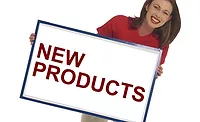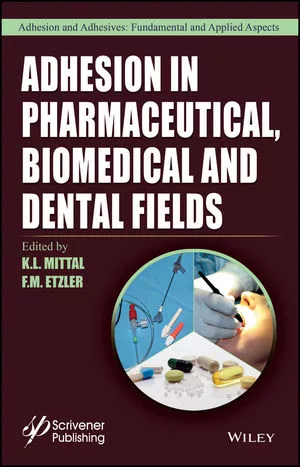Selecting Adhesives for Pharmaceutical and Medical Labels
With applications ranging from over-the-counter medications and nutraceuticals to blood bags and syringes, the process of matching adhesive to end use in this highly regulated industry can be challenging.


Primary and secondary blood bag labels must maintain integrity in extreme temperatures to provide key information related to the manufacturer and donor, respectively.

It shouldn’t surprise anyone that the adhesive requirements for labels in the medical and pharmaceutical industry are diverse and demanding. With applications ranging from over-the-counter medications and nutraceuticals to blood bags and syringes, the process of matching adhesive to end use in this highly regulated industry is more involved than in almost any other segment.
While similar to the process used for other industries, selecting adhesives for pharmaceutical and medical applications is generally more involved and requires consideration of a broader range of variables that can affect adhesive performance. Of course, the consequences of mismatching the adhesive to the application can also be particularly high in these applications.
What Is the Label Adhering To?
As with any application, the first question to address involves the characteristics of the surface to which the label will be applied. Pharmaceutical and medical labeling applications typically involve glass or some kind of plastic material, such as polypropylene, polyethylene, or polyvinyl chloride (PVC). As a result, rubber hot melt, emulsion acrylic, and solvent acrylic adhesives, modified to the application, are typically used.
The size and diameter of the container is an important consideration for adhesive selection. This is particularly true in the labels used on syringes. Syringes are used to dispense precise doses of critical medications such as insulin, as well as in the administration of vaccines. Label integrity is extremely important, and the small diameter of a syringe (in some cases down to ¼ in.) can introduce problems with lifting or peeling if the proper adhesive isn’t selected.
What Are the Application and Operating Temperatures?
Here is where things get complex, as products in the pharmaceutical sector are often subject to temperature extremes in production, distribution, and storage. A good illustration of this is labeling for blood and IV bags. Primary labels, which are typically machine applied at room temperature by the blood bag manufacturer, contain key information such as manufacturer name, location, reference and batch numbers, and codes for traceability.
After label application, the bags are filled with anticoagulant and sterilized with steam heat at a temperature of 250°F (121°C) before being shipped to hospitals and blood centers. Once blood is collected by the processing facility, secondary labels are hand applied to the blood bag; these labels contain donor identification number, blood type, product code, expiration date, and barcode tracking information. At this point, the labeled blood bags are stored in freezer conditions between 32°F (0°C) and -40°F (-40°C) until time of use, at which time the bags are thawed in a warm water bath.
An ultra-low service temperature range could be critical in meeting the labeling demands of new vaccines being developed in response to COVID-19. Multiple pharmaceutical companies are working in parallel to develop vaccines, and each vaccine has different temperature requirements that will affect the label adhesive. While one potential vaccine will permit labeling and distribution at typical cold chain temperatures of about 36°F (2°C), another will require deep-freeze -112°F (-80°C) temperature throughout manufacturing and distribution.
Adhesive manufacturers are closely monitoring developments in this area and have identified adhesives to meet the requirements of each vaccine in development. This includes those that need cryogenic preservation at -320°F (-196°C), a temperature range where biological activity ceases and a vaccine can be preserved in a stable environment.
How Will Labels Be Applied?
Understanding how pharmaceutical labels are applied can also impact adhesive selection. Labels are auto-applied on high-speed packaging lines for many applications, while others are manually applied.
Regardless of application method, labels are often required to have short-term repositionability in the event of initial misplacement. For example, one adhesive* provides a window of typically around 15 min during which it can be repositioned before permanently adhering, which is ideal for secondary labels in the previously discussed blood bag applications.
What Regulations Apply?
The regulatory landscape of the pharmaceutical and medical industry can be complex, and it is critical to work with an adhesive manufacturer that understands the landscape and can demonstrate compliance where required. This includes compliance with FDA 175.105, as well as confirmation that adhesives do not contain toxins per CONEG or materials covered under REACH SVHC and ROHS/WEEE.
Adhesives used in blood and IV bags must also undergo independent U.S. Pharmacopeia Biologic Hemolytic testing to ensure adhesives do not penetrate the PVC bag and contaminate the contents. In addition, adhesives used in pharmaceutical and medical applications should be tested for skin and eye irritants, as well as oral toxicity.
Supporting Anti-Counterfeiting and Security
The global counterfeit drug industry—estimated at $200 billion—makes counterfeiting and tampering key concerns. Adhesives play a key role in delivering tamper-evident solutions. A fiber tear label uses a permanent adhesive with twice the strength of common alternatives. The label will damage the underlying varnish box packaging if it’s removed, leaving visual evidence of tampering with applications such as over-the-counter cold and flu medicine. Specially formulated photoluminescent adhesives are also available that detect if a label is missing when ultraviolet (UV) light is shined on the substrate.
Managing Adhesive Change
Another way the medical and pharmaceutical industry is distinct from other industries where adhesives are used is in the need for greater consistency in the adhesives used over time and the need for more rigorous processes when changes to adhesives are required. The expectation here is twofold: the adhesive manufacturer must work to minimize changes to specific solutions; and, when these changes are required to meet regulatory updates or to introduce new capabilities, pharmaceutical customers must be promptly notified and provided ample time to adapt (usually 3-12 months). The adhesive manufacturer should also be expected to validate performance of the modified solution through application-based testing.
Matching Adhesives to the Application
When selecting adhesives for medical and pharmaceutical applications, it’s essential to get a detailed understanding of the adhesive requirements through every stage of the process, from application to final use. Working with an adhesive manufacturer with a broad portfolio of proven and specialized solutions for this industry, an understanding of the changing regulatory landscape, and a robust change management process can help ensure adhesives meet the most demanding requirements and perform as expected.
For more information, visit https://label.averydennison.com/pharma.
Watch author Cory Keller discuss some of these issues in an ASI Insider video episode!
Looking for a reprint of this article?
From high-res PDFs to custom plaques, order your copy today!







